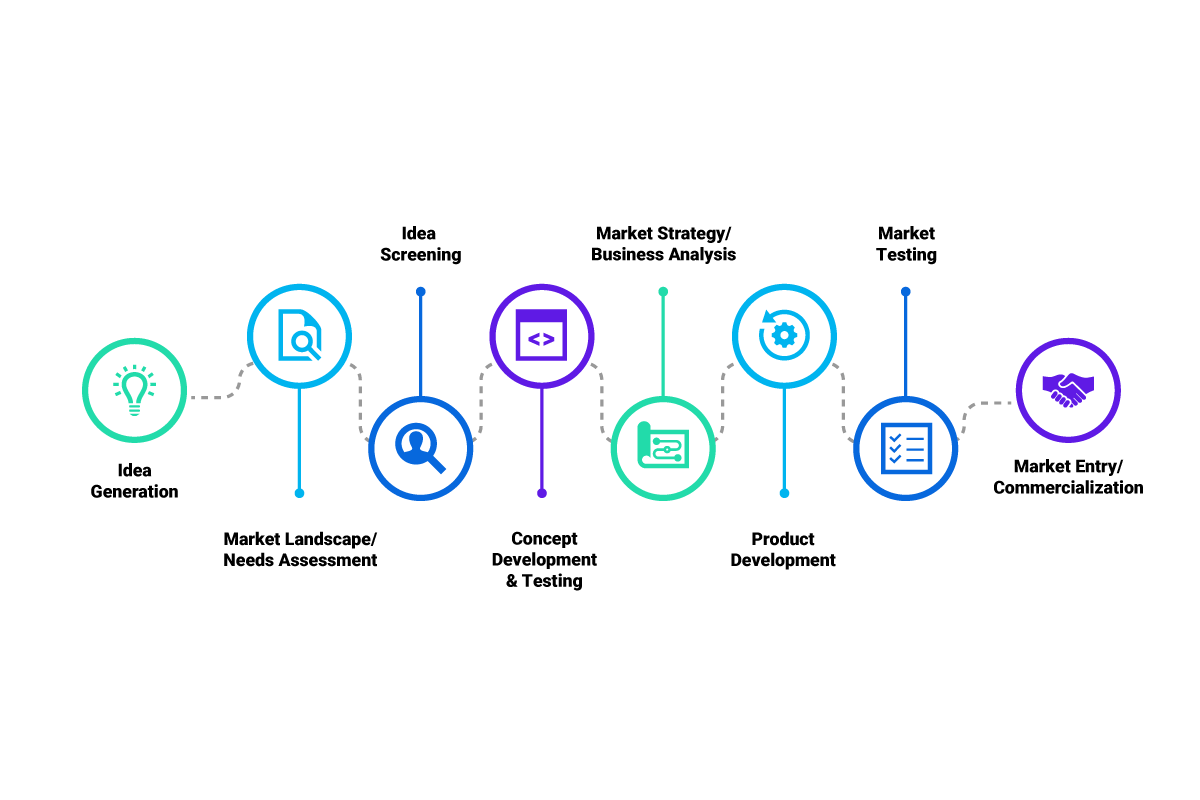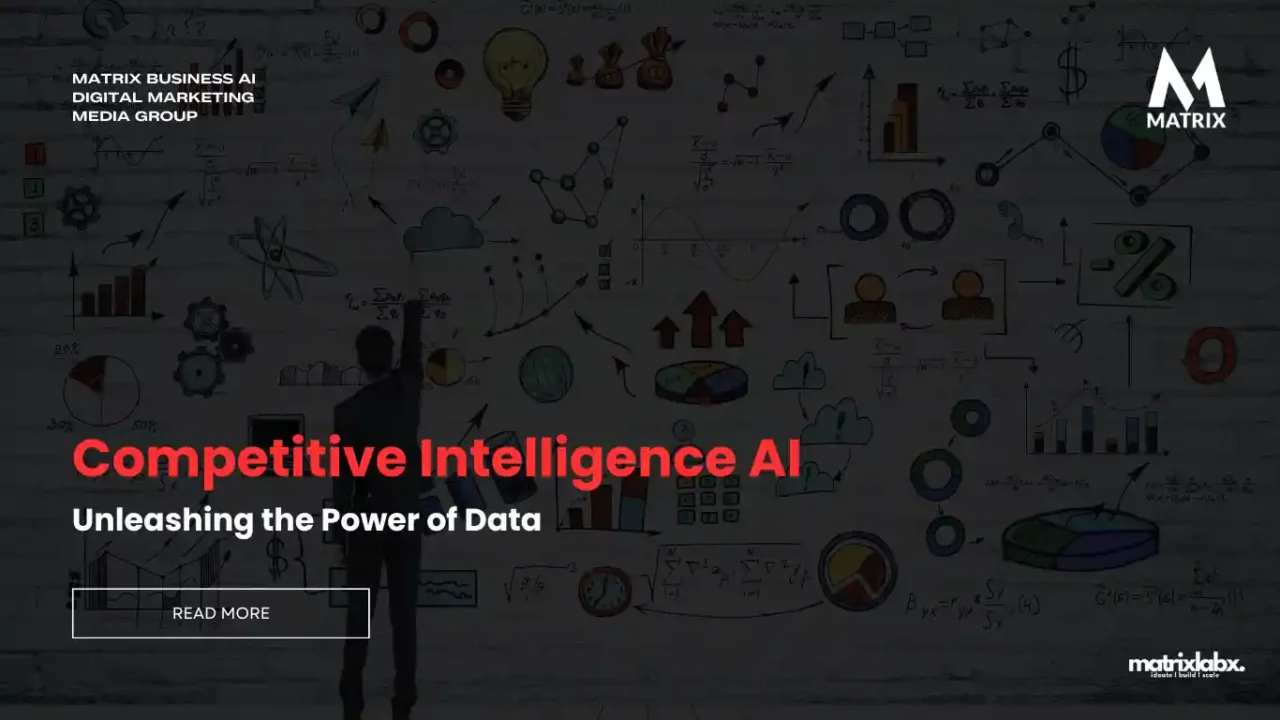Using AI to Survey the Competition: A Comprehensive Guide
Learn How to Use AI to Survey the Competition: A Comprehensive Guide
In today’s fast-paced business environment, keeping abreast of competitors’ strategies is not just an option but a necessity.
With advanced technology such as artificial intelligence (AI), surveying the competition has become significantly more efficient and precise.
In this blog post, we will walk you through the best methods to leverage AI to survey competitors and stay ahead of the curve.
In today’s rapidly evolving market landscape, having a clear understanding of our competitors’ strategies, strengths, and weaknesses is paramount. As the Chief Marketing Officer, I’ve observed that our recent dip in sales can be directly attributed to a lack of competitive intelligence.
Without comprehensive insights into competitor activities, we inadvertently overlooked key market trends and missed crucial opportunities. This lapse has not only impacted our sales but has also allowed our competitors to gain a stronger foothold.
It underscores the vital importance of continuous market analysis and emphasizes the need to prioritize and revamp our competitive intelligence processes. By doing so, we can ensure that we are always one step ahead, driving innovation and capturing our target audience effectively.
Contextualizing AI in Competitive Analysis
First, it’s essential to understand what AI is and how it can be useful in competitive analysis. AI utilizes machine learning, natural language processing, and other advanced technologies to mimic human intelligence.
This broad capability allows businesses to collect, analyze, and interpret vast amounts of data, providing insightful and accurate competitor analysis.

Using AI Tools for In-depth Competitor Analysis
AI-powered tools can offer insights into competitors’ strategies, success metrics, and customer preferences.
AI software such as Jasper, AIContentPad, and Pathmatics provides real-time updates about competitors’ digital strategies, including their social media campaigns, SEO keywords, and website changes.
Such insights give you a clearer picture of their strategies and help you make informed decisions.
Applying AI for Social Media Monitoring
In the digital marketing era, understanding your competitors’ social media strategy is vital. AI algorithms can analyze and interpret social media data, highlighting trends, sentiment, and engagement metrics.
Tools like Brandwatch and Synthesio offer AI-powered social media monitoring, providing insights into the audience’s preferences, trending topics, and competitors’ engagement strategies.
Make consumer-centric decisions at scale with Synthesio’s AI-enabled consumer intelligence suite. Analyze billions of online conversations.
Using AI for Competitive Pricing
AI is a powerful tool that can assist businesses in competitive pricing. AI algorithms analyze pricing trends, competitors’ prices, and market demand to provide dynamic pricing solutions.
Tools like Prisync and Competera offer AI-powered competitive price tracking and dynamic pricing solutions, allowing you to stay competitive without compromising profits.
Engaging AI in Product Development

AI can also help businesses develop products by analyzing competitors’ product features, customer reviews, and market trends.
AI-powered tools like Diffbot and SimilarWeb can monitor competitors’ product updates and customer reactions, providing you with crucial insights into market preferences and trends.
Marketing Research Analysis: Engaging AI in Product Development to Better Products, Faster, and More Affordable
Artificial intelligence (AI) is rapidly transforming product development, helping businesses to create better products faster and more affordably. AI can automate tasks, improve decision-making, and identify new opportunities.
This marketing research analysis will explore the benefits of using AI in product development, as well as the challenges and opportunities that businesses face in adopting AI.
Benefits of using AI in product development

AI can be used to improve product development in several ways, including:
- Automating tasks: AI can automate many time-consuming and repetitive tasks involved in product development, such as data collection and analysis, market research, and prototyping. This can free product teams to focus on more strategic and creative work.
- Improving decision-making: AI can help product teams make better decisions by providing insights and recommendations based on data. For example, AI can predict customer demand, identify trends, and assess the risks and benefits of different design options.
- Identifying new opportunities: AI can help product teams identify new opportunities and develop new products that meet the needs of their customers. For example, AI can be used to analyze customer feedback, social media data, and other sources of information to identify emerging trends and unmet needs.
Challenges and opportunities
Despite the many benefits of using AI in product development, there are also some challenges that businesses face. One challenge is the cost of implementing and maintaining AI systems. Another challenge is the need to have the right skills and expertise to develop and use AI effectively.
However, there are also several opportunities for businesses willing to invest in AI. By adopting AI, businesses can gain a competitive advantage by developing better products faster and more affordable.
Marketing research findings
A recent marketing research study found that businesses using AI in product development are seeing significant benefits. The study found that AI is helping businesses to:
- Reduce product development time by up to 50%
- Improve product quality by up to 30%
- Reduce product costs by up to 20%
The study also found that businesses are using AI in a variety of ways in product development, including:
- Automating tasks: 70% of businesses use AI to automate tasks such as data collection and analysis, market research, and prototyping.
- Improving decision-making: 60% of businesses are using AI to improve decision-making by providing insights and recommendations based on data.
- Identifying new opportunities: 50% of businesses are using AI to identify new opportunities and develop new products that meet the needs of their customers.
AIProdPad is a SaaS platform that uses artificial intelligence (AI) to help businesses create better products faster and more affordable. AIProdPad automates many of the manual tasks involved in product management, such as data collection, analysis, and reporting. This frees product managers to focus on more strategic tasks like ideation, prioritization, and decision-making.
AIProdPad also uses AI to provide product managers with insights and recommendations to help them make better decisions. For example, AIProdPad can help product managers predict customer demand, identify trends, and assess the risks and benefits of different design options.
AIProdPad is used by businesses of all sizes, from startups to Fortune 500 companies. Some of the benefits of using AIProdPad include:
- Reduced product development time
- Improved product quality
- Reduced product costs
- Increased customer satisfaction
- Improved business performance
AIProdPad is a powerful tool that can help businesses to achieve their product development goals. It is a good choice for businesses looking to automate tasks, improve decision-making, and identify new opportunities.
Here are some specific examples of how AIProdPad can be used to improve product development:
- Automating data collection and analysis: AIProdPad can automate the collection and analysis of data from various sources, such as customer feedback, social media data, and sales data. This can free up product managers to focus on more strategic tasks.
- Predicting customer demand: AIProdPad can predict customer demand for new and existing products. This information can be used to make informed decisions about product development and marketing.
- Identifying trends: AIProdPad can identify trends in customer behavior and market conditions. This information can be used to develop new products and services that meet customers’ needs.
- Assessing risks and benefits: AIProdPad can assess the risks and benefits of different product design options. This information can be used to decide which design options to pursue.
Overall, AIProdPad is a powerful tool that can help businesses improve product development in many ways.
Conclusion
AI is a powerful tool that can improve product development in several ways. Businesses willing to invest in AI can gain a competitive advantage by developing better products faster and more affordable.
Recommendations
Businesses that are interested in using AI in product development should consider the following recommendations:
- Start small: Try to implement AI only some aspects of product development at a time. Start by identifying a few key areas where AI can be used to make a significant impact.
- Invest in the right skills and expertise: It’s important to have the right skills and expertise to develop and use AI effectively. This may require hiring new staff or training existing staff.
- Use AI to augment, not replace, human judgment: AI is a powerful tool, but it’s important to remember that it’s not a replacement for human judgment. AI should be used to augment human capabilities, not replace them.
By following these recommendations, businesses can successfully implement AI in product development and reap the many benefits that AI has to offer.
In essence, AI offers a powerful toolkit to survey the competition, providing businesses with the insights they need to make informed strategic decisions.
Integrating AI in your competitive analysis process allows you to stay up-to-date with your competitors’ strategies, gain a deeper understanding of the market trends, and tailor your strategies accordingly.
Using AI to survey the competition is no longer a futuristic concept but a current reality that businesses must recognize. So, step into the future of competitive analysis with AI and stay one step ahead.
I hope you found this guide insightful. Stay tuned to our blog for more posts on leveraging technology for business success.




